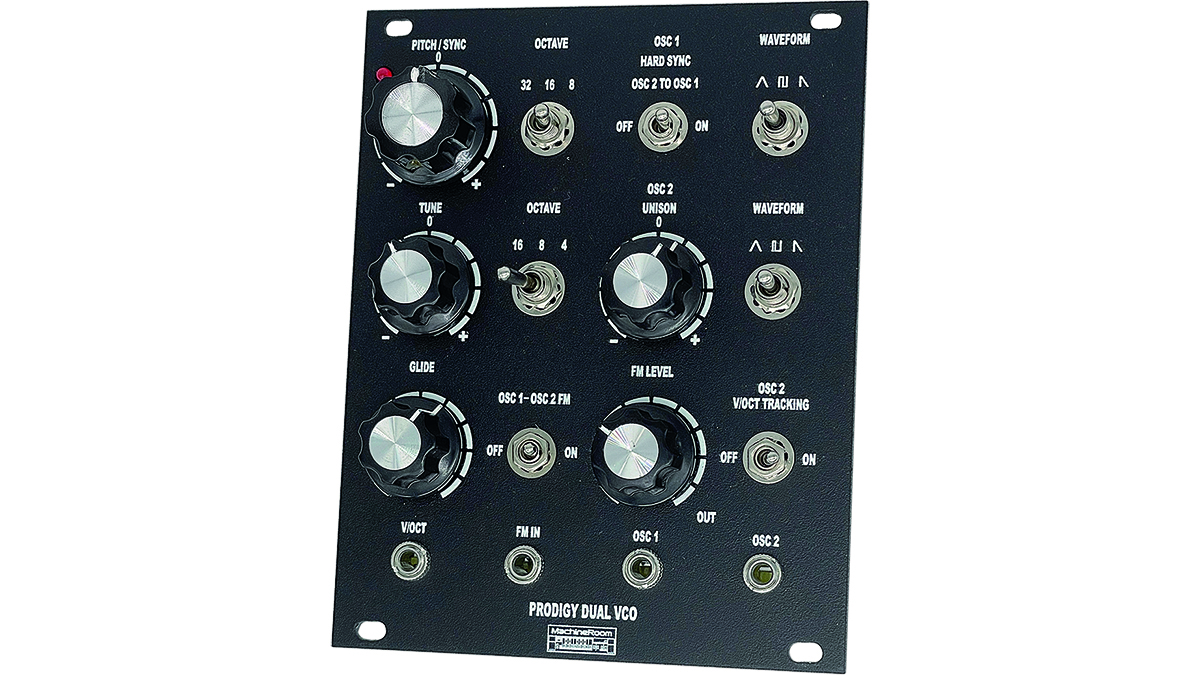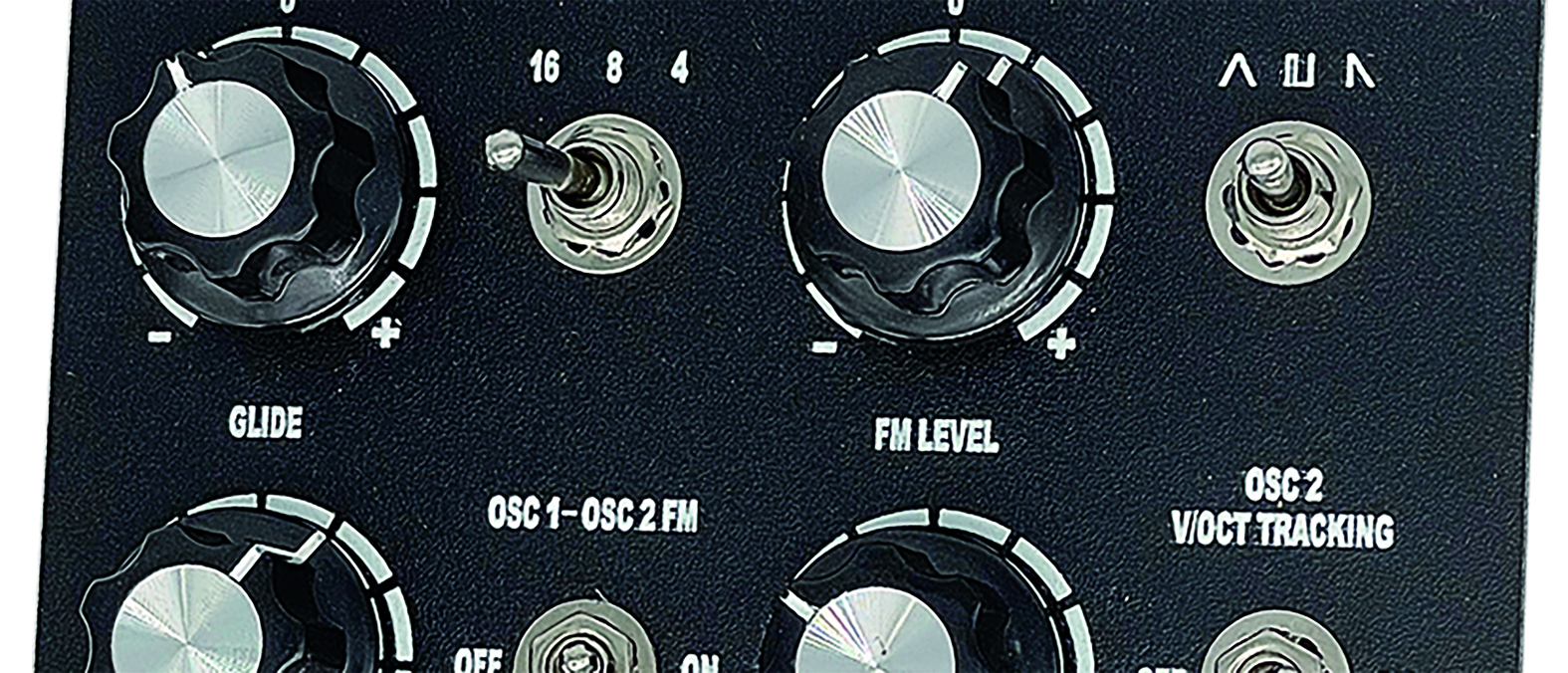MusicRadar Verdict
A nicely built homage to a classic, with modernities added for today’s player and tones that sound fresh, while giving a nod to the past.
Pros
- +
Offers a broad, articulate tone.
- +
Cross modulation.
- +
Excellent pitch-tracking.
Cons
- -
Large footprint.
MusicRadar's got your back
MachineRoom Prodigy Dual VCO: What is it?
It’s quite rare to find production models of synth equipment that are fully handbuilt, especially ones that are in a Eurorack format. Often supposedly handbuilt modules are still ultimately based on printed circuit boards but the MachineRoom Prodigy Dual VCO is fully handbuilt, using through-hole construction and a quick look round the back shows the care that’s gone into these instruments.
Based on the classic Moog Prodigy, this dual VCO retains all of the well-loved hallmarks of the original but with the addition of a couple of modern features. The ICs used are more stable, meaning they remain more accurate over a larger pitch range. There’s also cross modulation between the two oscillators, making for some interesting sound design options.
MachineRoom Prodigy Dual VCO: Performance and verdict
It’s a fairly large (at 20hp) module but not overly deep and at just 35mm is suitable for almost all cases, even smaller travel skiffs.
The fascia is logically laid out and clearly labelled, with simple white text. Knobs are silver capped black-ridged affairs, easily manipulated in dark studios or on stage – and they feel great. The resistance is just right, so dialling in the setting needed is easy. Likewise, the toggle switches for waveform choice, FM, tracking and octave selection feel good which is important where there are more than two settings.

The nitty gritty
The primary oscillator runs from 8’ to 32’, with triangle, square and saw waves, while the secondary switches out the square for a pulse wave, with a range of 4’ to 16’. The second oscillator can be hard synced to the first and there’s a knob for unison.
It would’ve been nice to have a patchpoint for CV control of this, like there is for the FM which has both patch point and attenuator. With regards to FM, this module doesn’t require an external modulation, as you can cross mod between the two VCOs, which have discrete outputs.
The final controls are a glide, with a lovely range to it, a switch for activating FM and one for toggling the second oscillator’s pitch tracking.
The tones that this module produces are warm but lively. They retain that classic, much sought-after analogue sound, without getting too fluffy.
You can get some gritty bite with a filter wide open and lovely creaminess when rolling off highs. This is best suited to low-pass or state-variable filters as it can sound a bit too brittle with a high-pass, but maybe that’s to be expected of a module like this. Many of us have unwittingly trained our ears and now have certain expectations. This is absolutely subjective however, so if you prefer brighter tones, this will provide them.
MusicRadar verdict: A nicely built homage to a classic, with modernities added for today’s player and tones that sound fresh, while giving a nod to the past.
MachineRoom Prodigy Dual VCO: Hands-on demos
MachineRoom
Modular.UA
MachineRoom Prodigy Dual VCO: Specifications
- Handbuilt through-hole construction.
- Classic sounds with some modern additions.
- CONTACT: MachineRoom
“A synthesizer that is both easy to use and fun to play whilst maintaining a decent degree of programming depth and flexibility”: PWM Mantis review
“I feel like that song had everything we needed to come back with”: Bring Me The Horizon’s Lee Malia on Shadow Moses, its riff and the secrets behind its tone, and why it was the right anthem at the right time
“I said, ‘Are we sure we can write a song about death?’”: The story of Mike + The Mechanics' classic No.1 The Living Years










